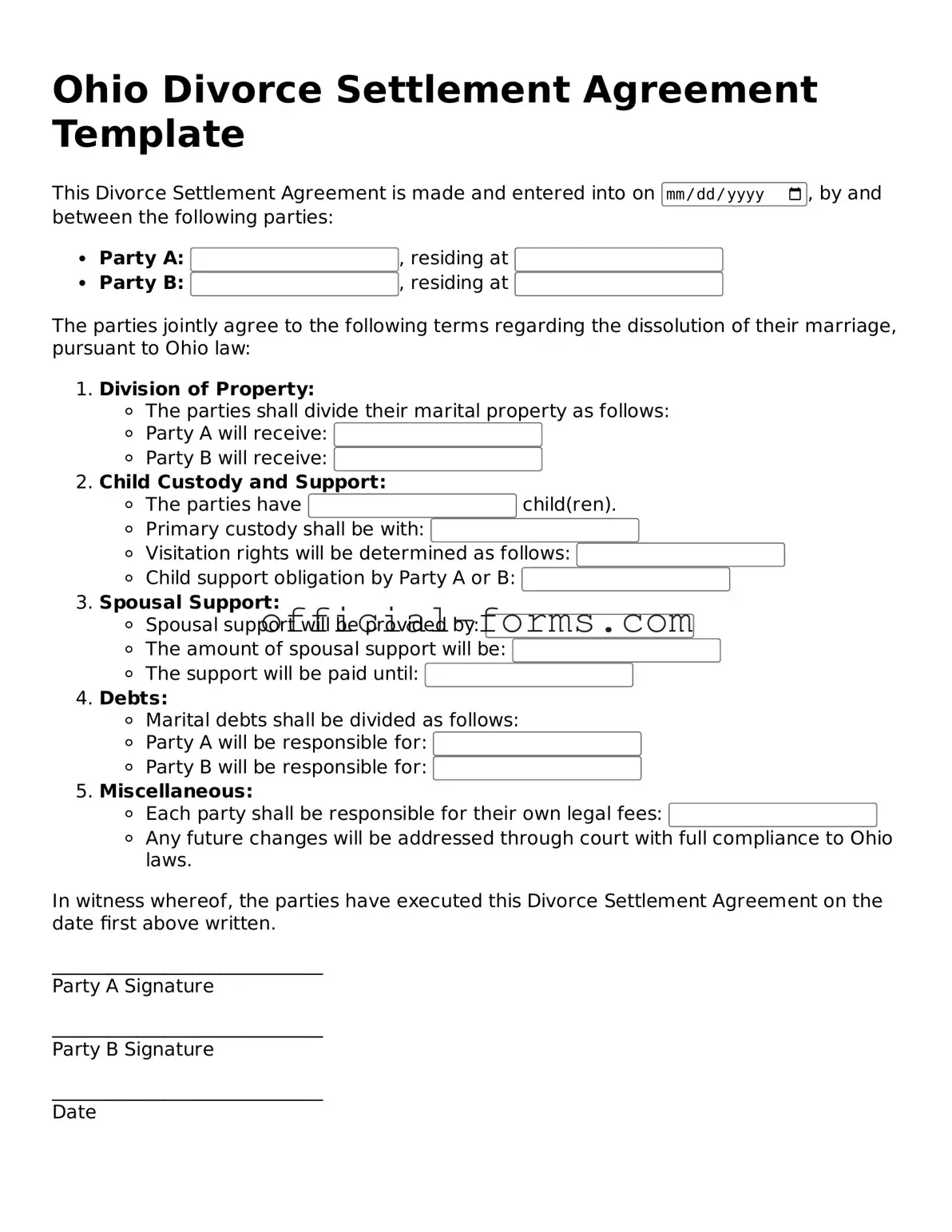Filling out the Ohio Divorce Settlement Agreement form can be a daunting task, and many people make common mistakes that can complicate the process. One frequent error is failing to provide complete and accurate information. This includes not listing all assets, debts, or income sources. Omitting details can lead to disputes later on, so it’s essential to be thorough.
Another mistake is not understanding the difference between marital and separate property. Many individuals mistakenly include separate property in the settlement agreement, which can affect the division of assets. It’s crucial to know what belongs to whom before submitting the form.
Some people overlook the importance of clarity in their agreements. Vague language can lead to misunderstandings. Be specific about how assets will be divided, how debts will be handled, and any arrangements regarding child custody or support. Clear terms help prevent future conflicts.
Additionally, many fail to consider tax implications. Assets such as retirement accounts or real estate can have tax consequences that may not be immediately apparent. Consulting with a financial advisor can provide insight into potential tax liabilities associated with the settlement.
Another common mistake is neglecting to include a plan for future changes. Life circumstances can shift, and it’s wise to outline how modifications to the agreement will be handled. This foresight can save time and stress down the road.
People also often forget to review their agreements before submission. Rushing through the process can lead to errors that could have been easily caught with a careful review. Taking the time to double-check details can make a significant difference.
In some cases, individuals fail to consider the needs of children involved in the divorce. Child custody and support arrangements must be clearly defined. Ignoring this aspect can lead to complications and emotional distress for all parties involved.
Another mistake is not seeking legal advice. While it may seem like a simple form, the implications of the agreement are far-reaching. Consulting with a legal professional can provide guidance and ensure that your rights are protected.
Finally, many individuals underestimate the importance of signatures and notarization. Failing to properly sign or notarize the document can render it invalid. Ensure that all necessary signatures are in place before submitting the form.
